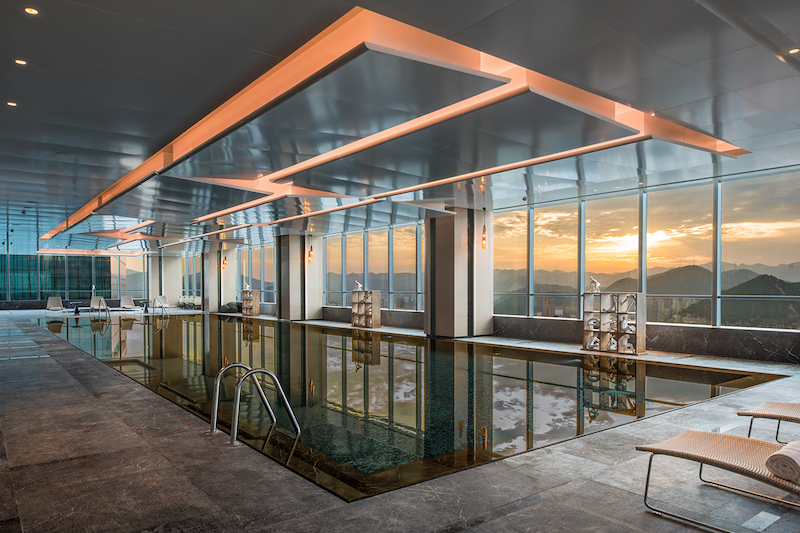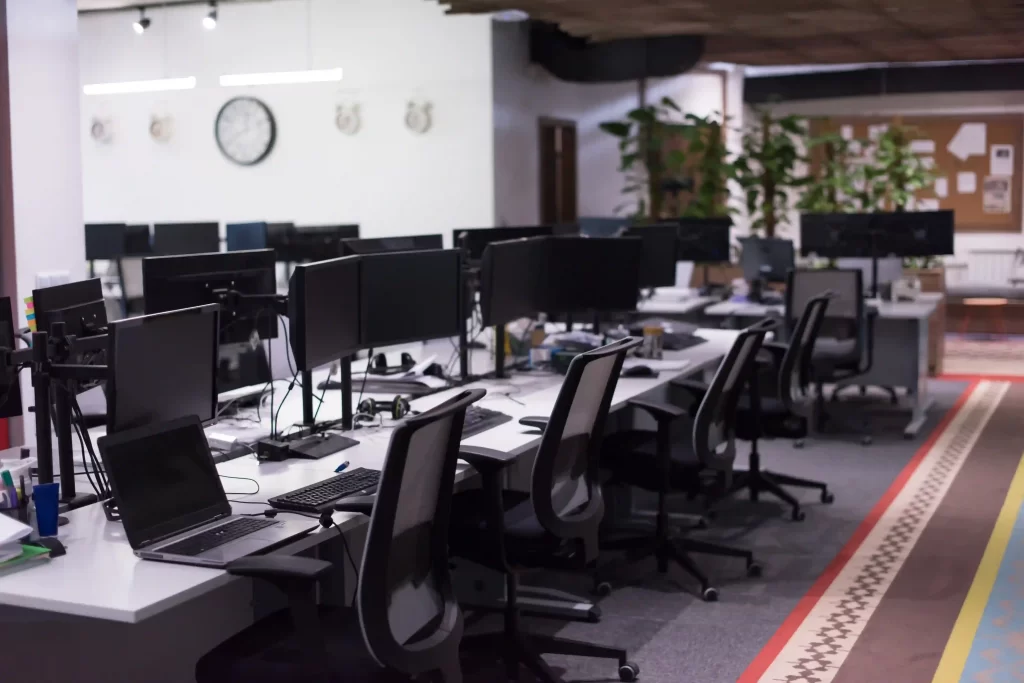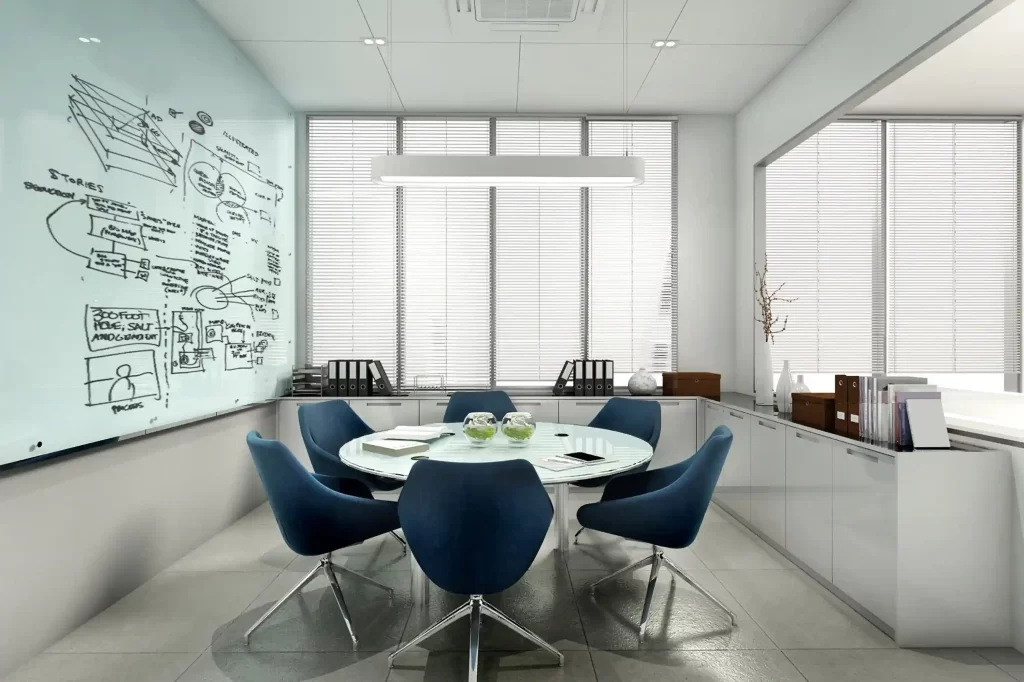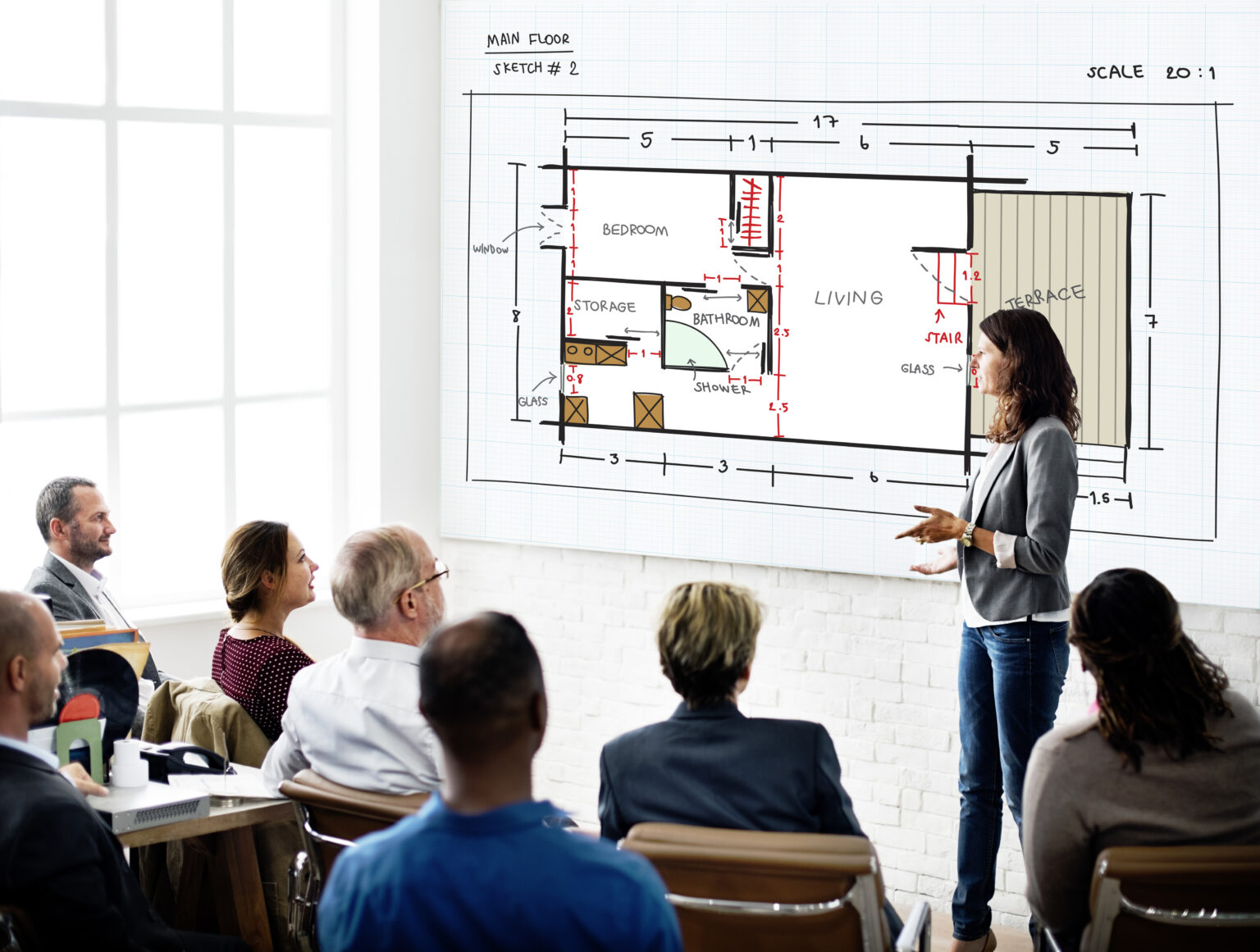Architecture and Corporate Interiors
Architecture for the Corporate Interiors
Designing corporate interiors requires careful consideration of various factors, including the company’s brand image, functional requirements, employee well-being, and aesthetic appeal.

Here is a suggested architectural approach for
corporate interiors

Space Planning
Begin by understanding the functional needs of the company and its employees. Consider the departments, workflows, and the required interaction between teams. Create a space plan that efficiently allocates areas for workstations, meeting rooms, collaborative spaces, break areas, and other necessary facilities.

Brand Identity
Incorporate the company’s brand identity into the interior design. This can be achieved through the use of colors, materials, textures, and graphics that align with the brand’s values, mission, and visual language. The office space should reflect the company’s culture and create a cohesive and recognizable environment.

Reception Area
The reception area serves as the first point of contact for visitors, clients, and employees. It should make a positive impression and reflect the company’s professionalism and values. Consider using high-quality finishes, comfortable seating, and appropriate branding elements to create an inviting and memorable space.

Workstations and Offices
Design workstations and offices that promote productivity, collaboration, and well-being. Consider open-plan layouts to encourage communication and interaction among employees. Provide ergonomic furniture, adjustable desks, and adequate storage solutions. Ensure proper acoustics to minimize distractions and provide privacy when needed.

Meeting and Collaboration Spaces
Include a variety of meeting rooms and collaboration areas to support different types of interactions. These spaces can range from small meeting pods for quick discussions to larger conference rooms equipped with audiovisual technology. Consider incorporating flexible furniture and writable surfaces to promote brainstorming and idea generation.

Breakout Areas
Provide well-designed breakout areas or social spaces where employees can relax, socialize, or have informal meetings. Consider comfortable seating, recreational activities, and amenities such as coffee machines or snack bars. These areas contribute to employee well-being, creativity, and a sense of community.
Benefiting from our Crossover of Sectors and Expertise
Innovation and Differentiation
By engaging architectural firms that have experience across multiple sectors, corporate clients can benefit from fresh perspectives and innovative ideas. Architects who have worked in diverse industries can bring creative solutions and best practices from different sectors, enriching the design process and leading to unique outcomes.
Enhanced User Experience
Architects with experience in various sectors have a broader understanding of user needs and preferences. This knowledge can be applied to the corporate sector to create workspaces that are not only functional but also intuitive and enjoyable for employees. By incorporating insights from other sectors, architectural services can help create environments that foster collaboration, employee well-being, and productivity.
Technology Integration
The rapid advancement of technology has a profound impact on all sectors, including architecture. Architects with exposure to different industries can leverage their expertise in integrating technology into corporate spaces. This includes incorporating smart building systems, IoT (Internet of Things) devices, and advanced audiovisual solutions to enhance the user experience, improve efficiency, and optimize energy consumption.
Adaptability and Resilience
Architects with experience in different sectors are well-equipped to design spaces that can adapt to changing needs and trends. This is particularly valuable in the corporate sector, where businesses often undergo transformations, mergers, or rebranding efforts. Architects who understand the dynamics of multiple sectors can design flexible spaces that accommodate future changes, ensuring long-term viability and resilience.
Sustainability and Energy Efficiency
As sustainability becomes increasingly important for businesses, architects with experience in sectors such as healthcare, education, or hospitality can bring valuable insights into creating environmentally friendly and energy-efficient corporate spaces. Knowledge gained from designing green buildings in other sectors can be applied to the corporate sector, helping organizations reduce their carbon footprint and achieve sustainability goals.
Cross-Sector Collaboration
Engaging architectural firms that have expertise in multiple sectors can facilitate collaboration between different industries. This can lead to the exchange of ideas, knowledge sharing, and the emergence of interdisciplinary solutions. By fostering collaboration across sectors, architectural services can contribute to the growth and innovation of the corporate sector.


